
Short, wry lecture by Kurt Vonnegut on the “simple shapes of stories.”

Short, wry lecture by Kurt Vonnegut on the “simple shapes of stories.”
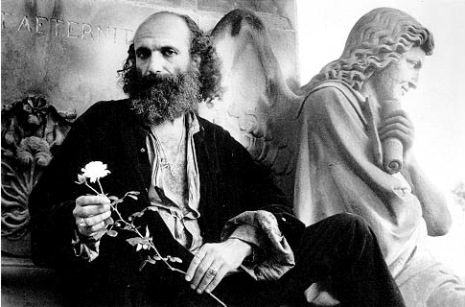
Poet, musician, film maker, photographer, publisher, world traveler, spiritual seeker and cosmic New Yorker, Ira Cohen has died at the age of 76
Author of dozens of books of poetry and “The Hashish Cookbook” (under the pseudonym of Panama Rose), Cohen also published the works of his friends William Burroughs, Gregory Corso, Paul Bowles, Brion Gysin, Jack Smith Harold Norse and many others.
Cohen made many pilgrimages to India and Kathmandu (where he ended up living for several years) and chronicled his journeys in extraordinary photographs. His travels took him to Morocco, Tunisia, Afghanistan, Spain, Japan…but all roads eventually lead back to New York City’s Lower East Side.
As a film maker, Cohen developed a style distinctly his own by photographing images reflected in Mylar plastic. The Invasion Of Thunderbolt Pagoda and Brain Damage were directed by Cohen in the late 1960s using this mirror effect. The Invasion Of Thunderbolt Pagoda was released in 2006 on DVD by the folks at the late lamented Arthur Magazine. Cohen conjured some of the same cinematic spirits as his peers Jack Smith and Kenneth Anger.

Jimi Hendrix photographed by Ira Cohen
In certain artistic and literary circles, Mr. Cohen was a touchstone. “Ira was a major figure in the international underground and avant-garde,” Michael Rothenberg, the editor of Big Bridge magazine, an Internet publication, said in an interview. “In order to understand American art and poetry post-World War II, you have to understand Ira Cohen.”
If you spent any time in downtown New York’s art scene during the past five decades you would have undoubtedly crossed paths with the open-hearted and wise gentleman who described himself as a “multi-media shaman.” Ira Cohen stayed relevant throughout his life, never square and never predictable. He was magic. His sphere of influence only grew larger as he grew older. His International reputation as a world class artist and wizard continued to flourish right up to his death on April 26.
Here’s an excerpt of The Invasion of Thunderbolt Pagoda which features a score by the original drummer of the Velvet Underground, Angus MacLise.
A trailer from a film on Ira Cohen and scenes from his film “Brain Damage” after the jump…

Hunter Thompson ran for Sheriff in Aspen, Colorado in 1970. His campaign posters featured a fist clenching a peyote button. While running on a platform to legalize drugs, he promised that if elected, he wouldn’t do any mescaline while on duty. He clearly spelled out his plan for punishing drug dealers:
It will be the general philosophy of the sheriff’s office that no drug worth taking shall be sold for money. My first act as sheriff will be to install on the sheriff’s lawn a set of stocks to punish dishonest dope dealers.”
Hunter lost the election. Aspen continued its decline into an enclave for the super rich.
Here’s his ad campaign for Sheriff:
Via biblioklept

His first assignment for Esquire was to interview Frank Sinatra - no easy task, as Old Blue Eyes had knocked back such requests from the magazine over several years. But Gay Talese wasn’t so quickly put off. He spent 3 months following Sinatra and his entourage, racking up $5,000 in expenses. Not common then and unthinkable now in these days of Google and Wikipedia.
The result of Talese’s hard work was “Frank Sinatra has a cold”, possibly the best profile written on the singer and certainly one of the greatest pieces of New Journalism written at that time. As writer and broadcaster Michael Kinsley has since said, “It’s hard to imagine a magazine article today having the kind of impact that [this] article and others had in those days in terms of everyone talking about it purely on the basis of the writing and the style.”
What’s great about “Frank Sinatra has a cold” is what’s best about Talese as a writer - his ability to make the reader feel centered in the story by reconstructing the reported events using the techniques of fiction. You can see this technique in another of his essays, “Joe Louis: The King as a Middle-aged Man”, which begins:
“ ‘Hi, sweetheart!’ Joe Louis called to his wife, spotting her waiting for him at the Los Angeles airport.
She smiled, walked toward him, and was about to stretch up on her toes and kiss him, but suddenly stopped.
‘Joe,’ she said, ‘where’s your tie?’
‘Aw, sweetie,’ he said, shrugging, ‘I stayed out all night in New York and didn’t have time.’
‘All night!’ she cut in. ‘When you’re out here all you do is sleep, sleep, sleep.’
‘Sweetie,’ Joe Louis said, with a tired grin, ‘I’m an ole man.’
‘Yes,’ she agreed, ‘but when you go to New York you try to be young again.’”
The article has its own symmetry and ended with one of the boxer’s ex-wives, Rose, watching home footage of Louis’s fight against Billy Conn:
“Rose seemed excited at seeing Joe at the top of his form, and every time a Louis punch would jolt Conn, she’d go ‘Mummmm’ (sock). ‘Mummmm’ (sock). ‘Mummmm.’
Billy Conn was impressive through the middle rounds, but as the screen flashed Round 13, somebody said, ‘Here’s where Conn’s gonna make his mistake: he’s gonna try to slug it out with Joe Louis.’ Rose’s husband remained silent, sipping his Scotch.
When the Louis combinations began to land, Rose went ‘Mummmm, mummmm,’ and then the pale body of Conn began to collapse against the canvas.
Billy Conn slowly began to rise. The referee counted over him. Conn had one leg up, then two, then was standing - but the referee forced him back. It was too late.
But Rose’s husband in the back of the room disagreed.
‘I thought Conn got up in time,’ he said, ‘but that referee wouldn’t let him go on.’
Rose Morgan said nothing - just swallowed the rest of her drink.”
It’s a clever and poignant ending, revealing as much about Rose and her relationship with her husbands, as it does about Talese’s talent as a writer. It also signals his need to record everything, which is all the more impressive when you know Talese never used a tape recorder when working on these profiles.
Gay Talese was born into a Catholic, Italian-American family in Ocean City, New Jersey in 1932. It was an upbringing he would later claim made him “not unfamiliar with the condition of being an outsider”:
“Indeed it was a role for which his background had most naturally prepared him: an Italo-American parishioner in an Irish-American church, a minority Catholic in a predominantly Protestant hometown, a northerner attending a southern college, a conservative young man of the fifties who invariably wore a suit and a tie, a driven man who chose as his calling one of the few possessions that was open to mental masqueraders: he became a journalist, and thus gained a licence to circumvent his inherent shyness, to indulge his rampant curiosity, and to explore the lives of individuals he considered more interesting than himself.”
His father was a tailor and his mother ran a dress boutique, it was here the young Talese learned his first journalistic skills:
“The shop was a kind of talk show that flowed around the engaging manner and well-timed questions of my mother; and as a boy not much taller than the counters behind which I used to pause and eavesdrop, I learned much that would be useful to me years later when I began interviewing people for articles and books.
I learned to listen with patience and care, and never to interrupt even when people were having great difficulty in explaining themselves, for during such halting and imprecise moments (as the listening skills of my patient mother taught me) people are very revealing - what they hesitate to talk about can tell much about them.”
In his brilliant “Frank Sinatra has a cold” Talese created a portrait of the singer that captured his over-bearing “mood of sullen silence”, his capricious nature, which made him at times both cruel and aggressive; or kind and overly generous. Talese revealed the background of Sinatra, the only child from Hoboken, who was scarred at birth by forceps, considered a weakling, reared mainly by his grandmother, his father a Sicilian who boxed under the name of Marty O’Brien, his mother worked at a chocolate factory, was strict and ambitious, who originally wanted her son to become an aviation engineer.
“When she discovered Bing Crosby pictures hanging on his bedroom walls one evening, and learned that her son wished to become a singer too, she became infuriated and threw a shoe at him. Later, finding she could not talk him out of it - ‘he takes after me’ - she encouraged his singing.”
Unlike other members of the New Journalism group (Norman Mailer, Hunter S. Thompson), Talese didn’t put himself at the heart of his essays, rather he saw himself as a non-judgmental writer, who allowed each subject to speak for him / her self. Nowhere was this more true than in “The Loser”, his incredible profile of boxer Floyd Paterson, which included a shocking admission by the former World Champion:
“Now, walking slowly around the room, his black silk robe over his sweat clothes, Patterson said, ‘You must wonder what makes a man do things like this. Well, I wonder too. And the answer is, I don’t know…but I think that within me, within every human being, there is a certain weakness. It is a weakness that exposes itself more when you’re alone. And I have figured out that part of the reason I do the things I do, and cannot seem to conquer that one word - myself - is because…is because…I am a coward.’”
Non-judgmental, perhaps. But somewhere down the line, Talese makes the decision of what to keep and what to cut out, and by nuance and omission, he shapes our impressions, and gives the reader an intimacy mere facts could not supply.

Will Schofield over at 50 Watts currently has an awesome collection of scanned images from the late-60s French magazine Plexus. These are bloody brilliant! From 50 Watts:
John Coulthart at feuilleton turned me on to the late 60s–early 70s French magazine Plexus, a sexy offshoot of Planète. (John found it through DRTENGE.) It’s an intriguing mix of surreal-fantastic-psychedelic art, interviews with writers (Jacques Sternberg was the literary editor), Playboy-style comics and the occasional Popeye comic, science fiction stories, Gilles de Rais profiles, philosophy, and—though there are few traditional photo spreads—lots and lots of boobs. Each early issue features a full-color “pin up”: an erotic work by an artist like Leonor Fini.
I strongly encourage you to visit 50 Watts. Wow!
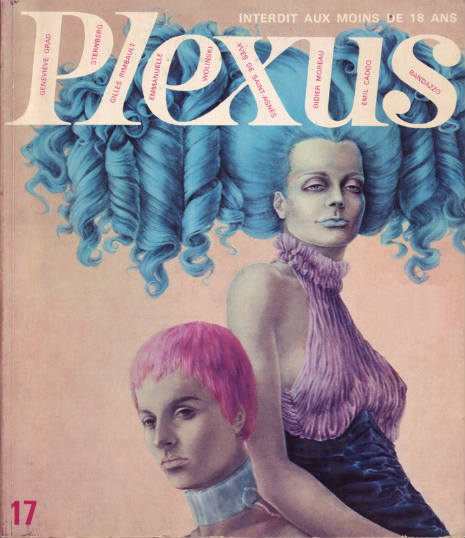

More after the jump…
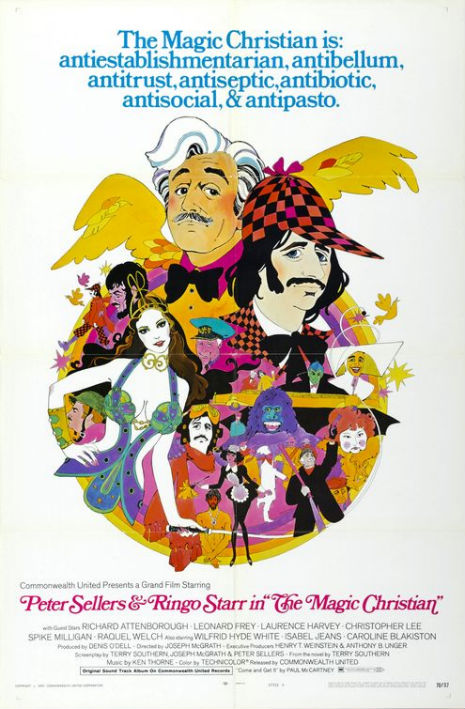
I’ve been a huge Terry Southern fan for as far back as I can remember—I’d even go so far as to say that I’m a Terry Southern nut. Posting some of his unpublished work here on Dangerous Minds has been a thrill for me. In my day, I have gone about collecting a fair amount of first editions, magazines, memorabilia and just stuff that relates to Southern’s career. In fact, as I sit here typing this, there is a framed poster of The Magic Christian hanging on the wall in my office (it’s the exact one you see above). Terry Southern is a charter member of my personal pantheon of 20th century heroes.
In case you don’t know who the grand and groovy Terry Southern was, here’s a brief bio, taken from the Open Road Media website, where his books are being made available as e-books beginning May 3rd:
Terry Southern (1924–1995) was an American satirist, author, journalist, screenwriter, and educator and is considered one of the great literary minds of the second half of the twentieth century. His bestselling novels—Candy (1958), a spoof on pornography based on Voltaire’s Candide, and The Magic Christian (1959), a satire of the grossly rich also made into a movie starring Peter Sellers and Ringo Starr—established Southern as a literary and pop culture icon. Literary achievement evolved into a successful film career, with the Academy Award–nominated screenplays for Dr. Strangelove, Or How I Learned to Stop Worrying and Love the Bomb (1964), which he wrote with Stanley Kubrick and Peter George, and Easy Rider (1969), which he wrote with Peter Fonda and Dennis Hopper.
Truly a “writer’s writer,” Southern was lauded by the likes of William Burroughs, Norman Mailer, Stanley Kubrick, Hunter S. Thompson, Tom Wolfe. Joseph Heller and Kurt Vonnegut. He also wrote or co-wrote the screenplays for Barbarella, The Loved One and The Cincinnati Kid and for a while, worked for Saturday Night Live in the 1980s. He was declared “the most profoundly witty writer of our generation,” by novelist Gore Vidal, no slouch in the wit department himself and is one of the “people we like” chosen by the Beatles for the Sgt. Pepper’s collage. Now the city of Dallas, TX has proclaimed May 1st, 2011, “Terry Southern Day” in recognition of one of the Lone Star State’s few genuine literary legends.
On that day Dr. Strangelove will screen at the historic Texas Theatre (where Lee Harvey Oswald was apprehended, btw) and Dallas City Councilwoman Delia Jasso will present Southern’s son, Nile Southern, with the official proclamation for “Terry Southern Day.” Nile Southern will also be showing a portion of his upcoming documentary Dad Strangelove, about his famous father. A Q&A session will afterwards will be moderated by The Dallas Observer’s Robert Wilonsky, who recently wrote a fascinating article about Nile and the important job he performs of archiving his father’s legacy for cinema historians and literary scholars of the future.
Philip K. Dick, Germs-manager Nicole Panter, author KW Jeter, and artist Gary Panter, at Philip K. Dick’s Santa Ana condo. From Nicole Panter’s Flickr account.
A rare look at the inside of Philip K. Dick’s condo! Here is the attendant interview, from Slash magazine, May 1980:
Philip K. Dick is 51 years old. Since 1955 he’s written 35 books that have been translated into eighteen languages. He has five ex-wives, two cats and lives 10 minutes from Disneyland. Of the books he has written, his personal favorites are, The Man in the High Castle, Dr. Bloodmoney, and Through a Scanner Darkly. His latest book, VALIS, will be released in February, with the sequel to be published sometime in the spring. Mr. Dick says he doesn’t take drugs anymore, but thinks about them all the time. Despite stories to the contrary, he’s a real charming guy.
The interview was conducted in Mr. Dick’s conapt by Gary and Nicole Panter. K.W. Jeter, one of Dick’s close friends and author of the yet unpublished but excellent DR. ADDER, attended and added his comments.
DICK: Um … fuck.
JETER: Beer?
SLASH: I don’t drink beer.
DICK: I don’t drink beer either. What’s so … so … I’m tired of all this circle of … of effete intellectual … this circle of intellectuals who drink beer. (laughter)
SLASH: Is this a conapt?
DICK: It definitely is a conapt.
SLASH: Is a conapt a combination of condominium and apartment?
DICK: Yes.
SLASH: So the people in your stories own their own apartments?
DICK: They own them and are doomed to live in them. And they are also doomed to participate in meetings with the other owners and have complaints made about their moral lives.
SLASH: Like in small towns … do you go to these meetings?
DICK: Yes, it’s mandatory.
SLASH: What do they say?
DICK: They say how come your car has got dust all over it? So I park in a dark corner of the garage so no one can see it. This one old lady built a little door for her cat to go in and out of and in a meeting someone complained that they saw cat shit out on the walkway and now she’s responsible for all the cat shit anyone sees around.
SLASH: Can they make you move out if the other tenants don’t like you?
DICK: No, they can’t get you out they can just sue you to death.
SLASH: Were you raised in a religious organization?
DICK: No.
SLASH: Are you anti organized religion?
DICK: Yes. Technically, I’m Episcopalian, but I don’t ever go. I’m interested in them because they’re a barrio church and they do lot of civil service work … technically I’m a religious anarchist.
SLASH: Is this Orange County?
DICK: Very Definitely … I bet that’s good beer. The Germs are breaking up, huh? The cat’s laughing at me … But Darby Crash is going to start his own band.
SLASH: Yeah, how’d you know?
DICK: I know … I know this stuff. Did I do that right? I sure like the Plugz. Now the beach bands like the Circle Jerks …
SLASH: Darby has a mohican now which brings up the kids you wrote about that modeled themselves after South American Indians or was it Africans. When did you begin to write about mutant youth cultures?
DICK: In my writing? TIME OUT OF JOINT in 1958.
SLASH: Were you a beatnik then … a bohemian?
DICK: I was all of those things. I knew the first beatnik. His name was Charles McLane … oh, the first hippy. I’m sorry. He was into drugs - that would be hippy.
SLASH: What made a beatnik, alcohol?
DICK: Some were into drugs. The difference was there was more of an emphasis on creative work with the beatniks. You had to write … much less emphasis on drugs.
SLASH: How far does a bohemian or lunatic fringe go back?
JETER: To the Bohemians in the twenties …
DICK: Wrong! Puccini’s LA BOHEME describes people who were poets and singers and who burned their pictures in the 19th Century. The furthest I can remember back is the thirties to the WPA artists paid by the government. They became the bohemian strata of the United States.
SLASH: What prompted you in 1958 to begin writing about this kind of youth culture? Kids with teeth filed to points?
DICK: Yeah, I don’t know. It wasn’t until ‘71 in a speech I delivered in Vancouver that I was consciously discussing the rise of the youth culture. I glorified punks “kids who would neither read, watch, remember, or be intimidated.” I spoke of the rise of a youth culture which would overthrow the government.
SLASH: Do you still think that’s the case?
DICK: I certainly do.
SLASH: Have you got a timetable?
DICK: What time is it now? (laughter) Any day now I expect to hear that swarms have entered the White House and broken all the furniture.
SLASH: What comes after that?
DICK: Oops!
More of the Philip K. Dick interview from Slash magazine after the jump
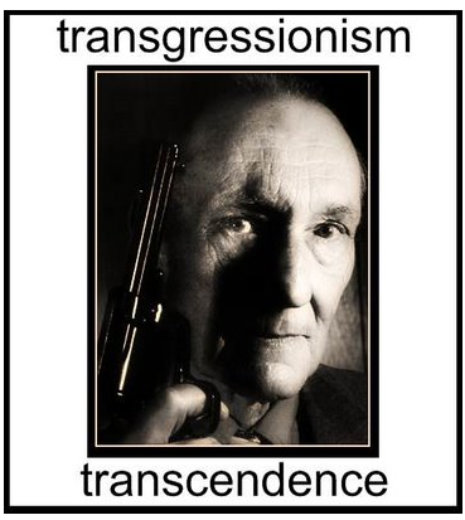
The Discipline Of DE is a short 16mm film directed by Gus Van Sant. It’s based on a story in “Exterminator!” by William Burroughs that at times reads like Buddhist noir:
DE is a way of doing. DE simply means doing whatever you do in the easiest most relaxed way you can manage which is also the quickest and most efficient way, as you will find as you advance in DE.You can start right now tidying up your flat, moving furniture or books, washing dishes, making tea, sorting papers. Don’t fumble, jerk, grab an object. Drop cool possessive fingers onto it like a gentle old cop making a soft arrest.”
Van Sant discusses the early stages of making the film:
This was my first film outside of my school projects, made in 1977 or so, and was the occasion that I was able to first meet William S. Burroughs, whose writing I much admired and who lived at the time in New York City. I wanted to get in touch with him to ask his permission to film this small story, and found him listed in the New York telephone book. I was under the impression that if I visited him and asked his permission in person that I would have more of a chance. And that may have been true—he did give me an okay—but also I was able to ask a few questions about the ideas in the story.
One of the things he said during our visit, not in the film or story, was, “Of course, when anyone knocks something over, or trips over something or breaks anything, they are at that moment thinking of someone they don’t like.”
...every time I knocked something over or tripped over anything I stopped to think, and I was always thinking of someone or some¬thing that I didn’t like. This was illuminating. Time and again, when I fumbled and broke something, there it was, I was thinking about some unfortunate incident in my past where I had been misjudged, ridiculed, or caught red-handed by someone, or when I stubbed my toe, I realized that I was thinking of a meeting in the future with someone about something that I didn’t want any¬thing to do with. So, the answer was possibly to not do too much moving around when things appear in your mind that could lead to someone or something that you don’t like. I haven’t mastered this one, however.
“Exterminator!” was published in 1973. A couple of years after its publication, Burroughs came to Boulder, Colorado to conduct a series of readings and workshops for the Jack Kerouac School Of Disembodied Poetics at the Naropa Institute. His concept of doing things easily fit in perfectly with the Dharma teachings of Chogyam Trungpa Rinpoche. In an atmosphere dominated by Tibetan Buddhist iconography and terminology, Burroughs’ approach was refreshingly Western while still capturing the essence of Trungpa’s crazy wisdom, a Zen-like attitude, both rigorous and lighthearted.

J.R.R. Tolkien seems like a character out of The Hobbit in this charming BBC documentary, In Their Own Words British Authors J.R.R. Tolkien, from March of 1968.
The interviews with Oxford students are fascinating in their wildly divergent views on Tolkien’s fantastic novels. A couple of them come off as humorless, pretentious twits who have clearly not yet been introduced to any kind of mind-altering substances.
An entertaining half hour spent with a man who initiated many of us into realms of magic, shifting our consciousness away from the mundane into the mystic.
Via biblioklept
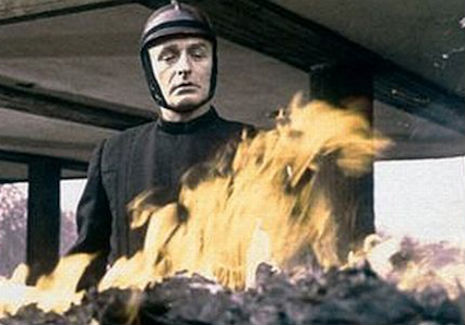
You’d think that people who actually go to the effort of visiting libraries, taking books from them, and then reading said books, would be a little more enlightened as to the harm posed to society by banning books. Alas no, as yesterday the American Library Association published its list of the ten books library patrons tried to have banned last year, known as the “Most Frequently Challenged Books of 2010”. I’m not familiar with a lot of work on this list, as I don’t tend to read “young adult”-type fiction, but there are some surprising choices on here:
1. And Tango Makes Three by Peter Parnell and Justin Richardson
Reasons: Homosexuality, religious viewpoint, unsuited to age group
2. The Absolutely True Diary of a Part-Time Indian by Sherman Alexie
Reasons: Offensive language, racism, sex education, sexually explicit, unsuited to age group, violence
3. Brave New World by Aldous Huxley
Reasons: Insensitivity, offensive language, racism, sexually explicit
4. Crank by Ellen Hopkins
Reasons: Drugs, offensive language, sexually explicit
5. The Hunger Games by Suzanne Collins
Reasons: Sexually explicit, unsuited to age group, violence
6. Lush by Natasha Friend
Reasons: Drugs, offensive language, sexually explicit, unsuited to age group
7. What My Mother Doesn’t Know by Sonya Sones
Reasons: Sexism, sexually explicit, unsuited to age group
8. Nickel and Dimed: On (Not) Getting By In America by Barbara Ehrenreich
Reasons: Drugs, inaccurate, offensive language, political viewpoint, religious viewpoint
9. Revolutionary Voices: A Multicultural Queer Youth Anthology edited by Amy Sonnie
Reasons: Homosexuality, sexually explicit
10. Twilight by Stephenie Meyer
Reasons: Religious viewpoint, violence
Brave New World? Are they serious?! A dystopian critique set in a future world where books are banned, and they want to ban the book? Then again maybe the pro-ban lobby are actually really progressive, as surely I am not the only who has though that Huxley’s future of mood controlling drugs and casual sex is actually kind of appealing. But I can think of much heavier dystopian work that would seem more suitable for banning. I guess it’s just the sex that’s offensive.
Barbara Jones of the ALA has made a statement about the banning of books, included here in a section from the Guardian’s article on the list:
There were 348 reports of efforts to remove books from America’s shelves in 2010, down from 460 the previous year. But the ALA believes the majority of challenges go unreported, and called on Americans to “protect one of the most precious of our fundamental rights – the freedom to read”.
“While we firmly support the right of every reader to choose or reject a book for themselves or their families, those objecting to a particular book should not be given the power to restrict other readers’ right to access and read that book,” said Barbara Jones, director of the ALA’s office for intellectual freedom. “As members of a pluralistic and complex society, we must have free access to a diverse range of viewpoints on the human condition in order to foster critical thinking and understanding.”